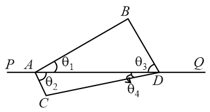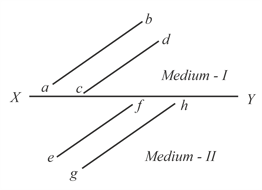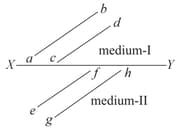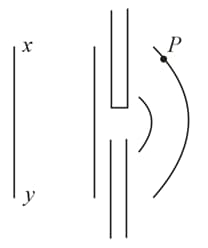Two coherent monochromatic light beams of intensities and superimpose. The maximum and minimum possible intensities in the resulting beam are;
Important Questions on Wave Optics and Interference
On a hot summer night, the refractive index of air is the smallest near the ground and increases with a height from the ground. When a light beam is directed horizontally, the Huygens' principle leads us to conclude that as it travels, the light beam,


The phase of the light wave at c, d, e and f are respectively. It is given that , then
The figure shows a surface XY separating two transparent media, medium-I and medium-II. The lines ab and cd represents wave fronts of a light wave travelling in medium-I and incident on XY. The lines ef and gh represent wave fronts of light wave in medium-II after refraction the Speed of light is

Statement (S): Using Huygen's eye-piece measurements can be taken but are not correct.
Reason (R): The cross wires, scale and final image are not magnified proportionately because the image of the objects is magnified by two lenses, whereas the cross wire scale is magnified by one lens only.
Identify the correct one
A monochromatic plane wave of speed c and wavelength is diffracted at a small aperture. The diagram illustrates successive wavefronts (vibrating in the same phase). After what time will some portion of the wavefront reach ?

(a) Light diverging from a point source.
(b) Light emerging out of a convex lens when a point source is placed at its focus.
(c) The portion of the wavefront of light from a distant star intercepted by the Earth.
Reason: According to wave theory frequency of light wave is equivalent to number of cycles completed per second and wave-particle duality explains the dual nature of electromagnetic waves as a wave or as a corpuscle.

